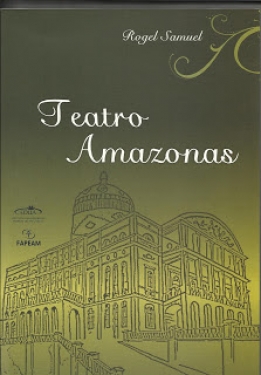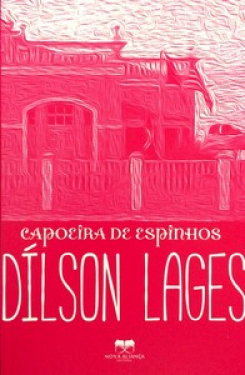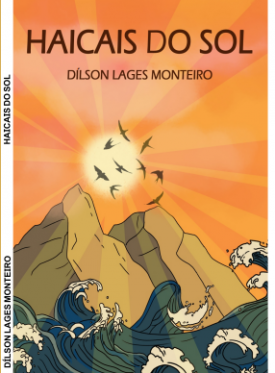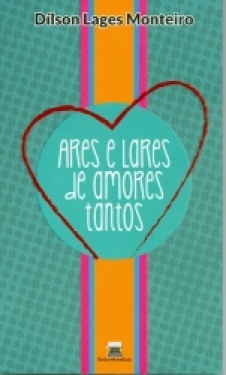Rei Arthur e JFK: convergências
 Por Flávio Bittencourt Em: 26/07/2010, às 17H36
Por Flávio Bittencourt Em: 26/07/2010, às 17H36
Rei Arthur e JFK: convergências
Leandro Karnal percebeu-as, com precisão cirúrgica.

ELADIO DEL VALLE, que provavelmente foi um dos assassinos do Senhor Presidente
(http://www.theanticmuse.com/2009/01/02/12-conceivable-jf-kennedy-assassins/)

THE MARRIAGE OF KING ARTHUR (O casamento do Rei Arthur)
(http://www.gutenberg.org/files/12753/12753-h/12753-h.htm)
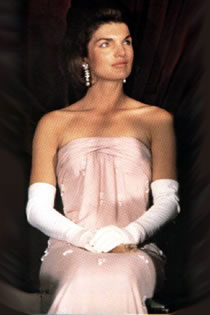
(http://neoneocon.com/wp-content/uploads/2009/01/jackie_kennedy-210x315.jpg)

(http://coisasdeglorinha.files.wordpress.com/2009/05/090326-les-lunettes-de-jackie-kennedy-aspx66790pagemainimageref.jpg)

(http://thebruceblog.files.wordpress.com/2008/08/c-17-w-jackie-kennedy1.jpg)

(http://sparklingwhine.wordpress.com/2009/04/01/top-5-and-three-quarterstribute-to-jackie-o-the-first-chic-lady-enough-already-of-michelle-mania/)

(http://home.millsaps.edu/mcelvrs/JFK_funeral.jpg)
"FOI O COMPLEXO INDUSTRIAL-MILITAR, A CIA E A MÁFIA ÍTALO-AMERICANA? SIM, MAS FOI, FUNDAMENTALMENTE, A INVEJA DOS LOUCOS CHEFÕES DO COMPLEXO INDUSTRIAL-MILITAR. E TIROS DO CHÃO FORAM DISPARADOS POR ELADIO DEL VALLE, CUBANO ANTI-CASTRISTA EXILADO NOS EUA. NÃO SE SABE EXATAMENTE SE APENAS OS PROJÉTEIS QUE SAÍRAM DO FUZIL DE DEL VALLE MATARAM JFK. BEM, ELE, O SENHOR PRESIDENTE, NÃO ERA EXATAMENTE o cara. ELE ERA o rei."
Idéias expressas há décadas - mas sem a precisão cirúrgica apresentada pelo texto do Dr. Karnal, sobre o brutal ASSASSINATO DO GRANDE PRESIDENTE JOHN FITZGERALD KENNEDY, dos Estados Unidos da América
27.7.2010 - Leandro Karnal é professor de História da América da Unicamp - O que eu desconfiava e nunca enunciei, por não ter elaborado a idéia de forma rigorosa, ele descreveu com uma precisão que se poderia considerar cirúrgica. Mas me recordo claramente de que tirei a aproximação entre Rei Arthur e JFK, antes de ler seu artigo: está, logo no título, aliás, numa das biografias de John Kennedy, o nome próprio Camelot. E parece que quem fez a declaração de que Camelot tinha acabado, depois da morte do grande presidente americano, foi a Sra. Bouvier Kennedy, a cuja memória esta nota de respeito e saudade é dedicada. F. A. L. Bittencourt ([email protected])
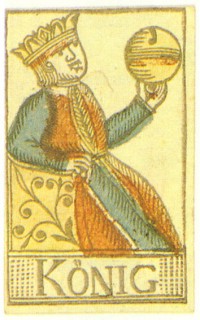
(http://atomo.blogspot.com/2007/12/play-me-another-hand-loose-everything-i.html)
"Corte do Rei Arthur e a família Kennedy têm muito em comum
por Leandro Karnal*
A Crise dos Mísseis de 1962 tinha também destacado um líder firme, capaz de enfrentar e negociar ao mesmo tempo, pelo menos para o grande público americano. O eleitorado dos Estados Unidos apenas conheceu o aspecto externo da crise: a União Soviética tinha tentado agredir a área de interesse de Washington e o presidente jovem e bonito, o primeiro a nascer no século 20, tinha feito um bloqueio e cortado as garras do urso soviético. Assim parecia ao público ocidental. Assim a imprensa americana registrou.
A tragédia de 1963 canonizou Kennedy. A cena de Dallas causou um impacto só repetido, em parte, pelo ataque às Torres Gêmeas, em 2001. Nos dois episódios, todos os norte-americanos sabiam onde estavam quando receberam a notícia da tragédia. Três presidentes tinham sido assassinados antes de Kennedy, mas nenhum de forma tão impactante. Nenhum ao vivo. Mesmo o mítico Abraham Lincoln tinha sido baleado num camarote de teatro e agonizou numa casa obscura longe do público. A morte de James Garfield e William McKinley não é lembrada por ninguém. Resta Kennedy e o tailleur rosa da primeira-dama, manchado, como pano de relíquia, com o sangue presidencial. Fica o vídeo e a nação chocada. Resta o culto e a chama eterna no cemitério de Arlington.
Passados alguns anos, o mundo encantado de Camelot (a lendária e perfeita corte do rei Arthur) começou a mostrar fissuras. A obra de Seymour M. Hersh (The Dark Side of Camelot) trouxe à tona várias questões sobre a intensidade sexual do chefe da família perfeita. De rei-presidente da Távola Redonda, Kennedy passa a fauno insaciável. As obscuras relações com Marilyn Monroe e tantas outras personagens lançaram lama na auréola presidencial. Porém, como acontece com heróis em geral, o ataque apenas reforça o caráter épico. Para muitos a crítica revela apenas a inveja, o ressentimento e a perfídia de quem não se igualou ao ser olímpico.
O debate sobre o caráter de Kennedy mostra o fascínio por essa família real americana. Como os Windsor na Inglaterra ou os Gandhi na Índia, os Kennedys encarnam a vitória de uma linhagem de destaque, um modelo cuja glória e tragédias substituem a monótona narrativa das nossas realidades mesquinhas. Mais: os Kennedys são também a vitória do sonho americano, pois são migrantes irlandeses e trazem para este lado do Atlântico o caldo utópico que formou o Novo Mundo. O projeto norte-americano de igualdade na independência de 1776 nunca tinha encoberto a crença na diferenciação por mérito - estético, financeiro ou intelectual. A sociedade daquele país crente no seu próprio excepcionalismo, sempre ressaltou que a igualdade é legal, porém a diferenciação é pessoal, base da democracia-meritocracia que constitui o maior binômio do sonho dos EUA. Como disse o fictício Nixon encarnado por Anthony Hopkins (np filme de Oliver Stone) ao contemplar um busto de JFK na Casa Branca: "Os americanos amaram em você o que gostariam de ser e odiaram em mim o que são". Nada mais denso para pensar na aura mítica de John Fitzgerald Kennedy. Seria o presidente assassinado um ser amado por encarnar os mais altos sonhos dos americanos ou por ser o menos americano dos presidentes dos EUA? Quarenta e seis anos depois, a resposta segue no ar.
*por Leandro Karnal: coordenador de pós-graduação em História e professor de História da América na Unicamp".

1. Lucien Sarti and Two Corsican Hitmen
According to jailed French mobster, Christian David, Kennedy was shot by three Corsican assassins. David named the deceased Sarti as one of the gunmen and offered to reveal the identities of the others if he was given his freedom. According to David, the two unnamed assassins were in buildings to the rear of the President, while Sarti fired from the grassy knoll in front of the motorcade. The British television documentary The Men Who Killed Kennedy identified Sarti as the man in a police uniform apparently firing a rifle on the grassy knoll visible in a computer-enhanced enlargement of a photo taken by Mary Moorman at the moment of the fatal shot.
2. Charles V Harrelson
Harrelson – the father of actor Woody Harrelson – served a life sentence from 1979 until his death in March, 2007, for murdering a federal judge John H Wood Jr. during a six hour stand-off before his arrest, Harrelson held a gun to his head and confessed to shooting Kennedy. He later retracted the statement, saying he had been high on cocaine at the time.
3. ‘Carlos’ and Others
David Ferrie (left) and Oswald (right)
Minister Raymond Broshears reported that David Ferrie – a bizarre individual often suspected of involvement in the assissination who had ties to Oswald, the CIA, and the Mafia – would, after getting drunk, often talk about his role in the conspiracy. Ferrie reported said his job was to wait in Houston for two gunmen, one of them a Cuban exile Ferrie referred to as Carlos, and then fly them on the second leg of an escape route that was to take the assassins to South African via South America. Ferrie told Broshears the plan fell apart when the assassins, flying in a light plane, decided to skip the stop in Houston and press on to Mexico. They allegedly died when their plane crashed near Corpus Christi, Texas.
4. Luis Angel Castillo
According to assassination researcher Penn Jones, Castillo has stated under hypnosis that “he was on the parade route with a rifle that day … [with] instructions to shoot a man in a car with red roses”. Jackie Kennedy was the only person in the motorcade with red roses; all other women had been given yellow Texas roses.
5. Eladio Del Valle and Loran Hall
According to “Harry Dean” (the ‘war name’ of a man who claims to be a former CIA agent), as quoted by W.B. Morris and R.B. Cutler in Alias Oswald, the assassins were anti-Castro activists Hall and del Valle, who were hired by the John Birch Society. Although Hall says he was at his home in California on November 22, 1963, he allegedly told the Dallas Morning News in 1978 that, a month before the assassination, right-wing activists working with the CIA tried to recruit him for a plot to kill Kennedy. As for del Valle, he died under suspicious circumstances in 1967. Del Valle, who was being searched for as a possible witness in the Clay Shaw conspiracy trial, was discovered shot through the heart and with his head split open by a machete.
6. ‘Brother-In-Law’ and ‘Slim’
In 1992 Kerry Thornley appeared on the television show A Current Affair and said he had been part of a conspiracy to kill President Kennedy. His co-comspirators were two men he called ‘Brother-in-Law’ and ‘Slim’. Thornley also denied having been responsible for framing Oswald, whom Thornley had befriended in the Marines: ‘I would gladly have killed Kennedy, but I would never have betrayed Oswald.’ He added, ‘I wanted [Kennedy] dead. I would have shot him myself.’ Thornley has also claimed that he and Oswald were the products of a genetic engineering experiment carried out by a secret neo-Nazi sect of eugenicists called the Vril Society, and that the two of them had been manipulated since childhood by Vril overlords.
7. Jean Rene Soutre
Soutre, a terrorist in the French Secret Army Organisation, is believed by some researchers to have been recruited by the CIA to serve as an assassin. According to CIA documents obtained under the Freedom of Information Act by researcher Mary Ferrell, French intelligence reported that Soutre was in Fort Worth on the morning of November 22, 1963, and in Dallas that afternoon. Soutre was picked up by US authorities in Texas within 48 hours of the assassination and expelled from the country.
8. Roscoe White, ‘Saul’, and ‘Lebanon’
In 1990 Ricky White claimed his father Roscoe, a Dallas police officer, had been one of President Kennedy’s assassins. According to Ricky, a detailed description of the conspiracy could be found in Roscoe’s diary, which had disappeared after it was taken by the FBI for inspection. Two other gunmen, referred to in the diary only by the code names ‘Saul’ and ‘Lebanon’, were also involved. In addition Roscoe’s widow, Geneva, told journalist Ron Laytner that she had overheard Roscoe and Jack Ruby plotting to kill Kennedy, adding, ‘We at first thought the assassination was more Mob [but late realised] it was more CIA.’ Fifteen years before Ricky and Geneva White went public, Hugh McDonald, in Appointment in Dallas, identified one of the Killers as a professional assassin known as Saul. McDonald claimed to have tracked down Saul, who admitted to having been paid $50,000 to shoot the President. Saul claimed to have fired from the Dallas County Records Building – which was also described in Roscoe White’s diary as one of the locations the assassins had shot from. Despite these similarities, there are some inconsistencies in the plots described by McDonald and Ricky White. Most Notably, Roscoe White in his diary and Saul in his meeting with McDonald each allegedly claimed to have fired the fatal shot.
9. George Hickey Jr
According to Bonar Menninger’s book Mortal Error – based on 25 years of research by ballistics expert Howard Donahue – Kennedy was accidentally killed by Hickey, a secret service agent in the car behind the presidential limo. According to this theory, when Oswald began shooting, Hickey reached for his rifle and slipped off the safety. As he tried to stand in the back seat of the car to return fire, he lost his balance and accidentally pulled the trigger, firing the shot that killed the President. Hickey himself had told the Warren Commission that he did not even pick up his rifle until after the fatal shot.
10. Frank Sturgis and Operation 40
Marita Lorenz, a CIA operative who had been Fidel Castro’s mistress, told the New York Daily News in 1977 that she had accompanied Lee Harvey Oswald and an assassination squad to Dallas a few days before Kennedy was killed. She identified her companions in the trip as CIA operative (and future Watergate burglar) Frank Sturgis and four Cuban exiles: Orlando Bosch, Pedro Diaz Lang and two brothers named Novis. The men were members of ‘Operation 40′, a group of about 30 anti-Castro Cubans and their American advisors originally formed by the CIA in 1960 for the bay of Pigs invasion. Lorenz later stated that Sturgis had been one of the actual gunmen and that he told her after the assassination, ‘You could have been part of it – you know, part of history. You should have stayed. It was safe. Everything was covered in advance. No arrests, no real newspaper investigation. It was all covered, very professional.’ Sturgis denies that there is any truth to Lorenz’ story. However, he once said that the FBI questioned him about the assassination right after it happened, because the agents said, ‘Frank, if there’s anybody capable of killing the President of the United States, you’re the guy who can do it.’
11. James Files and Charles Nicoletti
In 1996 Files claimed that he and Nicoletti, a Mafia hit man, had been on the grassy knoll at Dealey Plaza and that they had both shot President Kennedy at the same time. Files said that he was paid $30,000 and had orders not to hit Jacqueline Kennedy. He added that Nicoletti took his order from Sam ‘Momo’ Jiancana, who in turn answered to Anthony ‘Big Tuna’ Accardo. Since all three mobsters were murdered between 1975 and 1977, there was no one to corroborate Files’ story. The FBI dismissed the story, noting that Files is now serving a 50 year sentence in Illinois for murdering a police man and thus had little to lose by ‘confessing’ while gaining his 15 minutes of fame.
Source: The Book of Lists
Technorati Tags: conspiracy, crime, JFK".
(http://listverse.com/2007/09/08/11-alternative-jfk-assassins/)
















